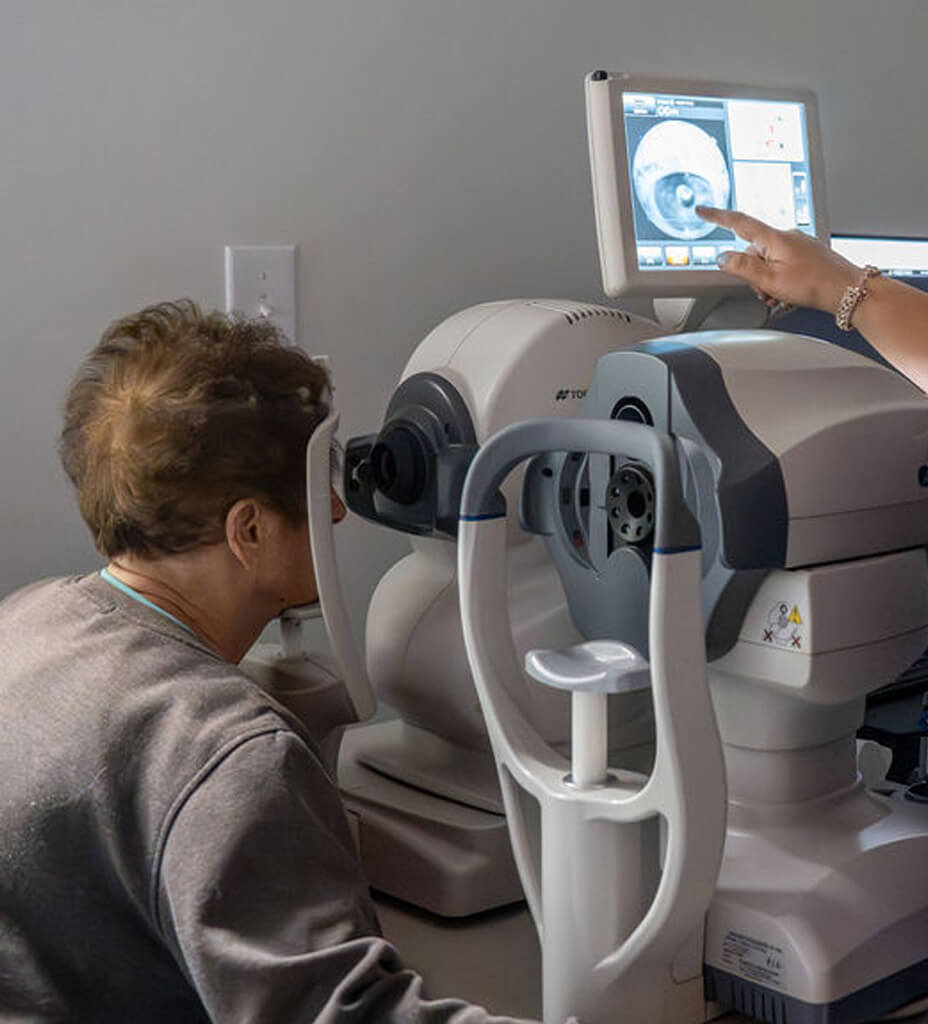Glossary of Eye Care Terms

Glossary of Eye Care Terms
Navigate the world of eye care with ease using our comprehensive glossary of terms. From astigmatism to presbyopia, learn the definitions and importance of common eye health concepts.
A
Astigmatism – A refractive error caused by an irregularly shaped cornea or lens, resulting in blurred or distorted vision.
Amblyopia (Lazy Eye) – Reduced vision in one eye caused by abnormal visual development, usually starting in childhood.
Anti-Reflective Coating (AR Coating) – A lens treatment that reduces glare and reflections, improving clarity and comfort, especially during nighttime activities.
B
Binocular Vision – The ability of both eyes to work together to create a single, clear image.
Blepharitis – Inflammation of the eyelids, often causing redness, irritation, and crusting near the eyelashes.
Blue Light Blocking Lenses – Lenses designed to filter out harmful blue light from screens and digital devices, reducing eye strain.
C
Cataracts – Clouding of the eye’s natural lens, leading to blurry vision and sensitivity to light.
Conjunctivitis (Pink Eye) – Inflammation or infection of the conjunctiva, causing redness, itchiness, and discharge.
Cornea – The clear, dome-shaped surface at the front of the eye that helps focus light onto the retina.
D
Diabetic Retinopathy – Damage to the retina’s blood vessels caused by diabetes, potentially leading to vision loss.
Dry Eye Syndrome – A condition where the eyes do not produce enough tears or the tears evaporate too quickly, causing discomfort and irritation.
E
Emmetropia – The term for perfect vision where no refractive errors (e.g., nearsightedness or farsightedness) are present.
Eyeglass Prescription – A written order by an eye doctor specifying the lens power needed to correct your vision.
F
Farsightedness (Hyperopia) – A refractive error where distant objects are seen clearly, but close objects appear blurry.
Floaters – Tiny spots or threads that drift across your vision, caused by clumps in the eye’s vitreous gel.
G
Glaucoma – A group of eye conditions that damage the optic nerve, often associated with high eye pressure, which can lead to vision loss.
K
Keratoconus – A progressive condition where the cornea thins and bulges into a cone shape, distorting vision.
M
Macular Degeneration – An age-related condition affecting the central part of the retina (the macula), leading to loss of central vision.
Myopia (Nearsightedness) – A refractive error where close objects appear clear, but distant objects are blurry.
O
Optometrist – A healthcare professional who diagnoses and treats vision problems, prescribes glasses or contact lenses, and manages eye conditions & diseases.
Ocular Surface – The outermost layer of the eye, including the cornea and conjunctiva, critical for maintaining eye health and vision.
P
Presbyopia – Age-related loss of the eye’s ability to focus on nearby objects, typically occurring after age 40.
Prism Lenses – Specialized lenses used to correct binocular vision issues by altering the path of light entering the eye.
R
Retina – The light-sensitive layer at the back of the eye that converts light into signals sent to the brain.
Retinal Detachment – A serious condition where the retina separates from the underlying tissue, potentially causing vision loss.
T
Toric Lenses – Contact lenses designed to correct astigmatism by providing different powers in different meridians of the lens.
V
Visual Acuity – The clarity or sharpness of vision, typically measured by reading a Snellen chart.
Vitreous Humor – The gel-like substance filling the space between the lens and the retina in the eye.